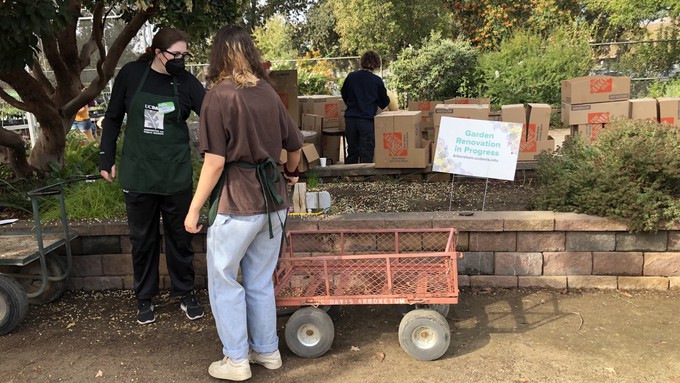
Find deep discounts on water-wise and native plants

The garden carts will be in demand again at the UC Davis Arboretum Teaching Nursery's Clearance Sale this Saturday. Kathy Morrison
It’s one of my favorite words: “Sale!” Even better: “Clearance sale!” And for the trifecta: “Clearance plant sale!”
How can I resist? Or you, too!
Saturday, Nov. 5, the UC Davis Arboretum Teaching Nursery hosts its annual Fall Clearance Plant Sale. Open to the public, this huge sale features hundreds of varieties of water-wise and native plants – perfect for Sacramento-area gardens. During its last public sale of 2022, the one-acre nursery wants to send as many plants as possible to new homes – and make room for 2023’s inventory.
Now is the best time to transplant many of these perennials, shrubs, trees, succulents, vines, grasses and bulbs. The Arboretum Teaching Nursery specializes in climate-appropriate, water-wise plants that are proven to thrive in our area. Not only do they use less water, these easy-care plants are very attractive and support wildlife.
Customers will receive 20% off all plants. Members of the Friends of the Arboretum receive an extra 10% discount (30% total). Not a member? Join at the door and get a free gift.
Hours are 9 a.m. to 1 p.m. Saturday. An inventory list will be available on the arboretum’s plant sales page.
The Arboretum Teaching Nursery is located on campus on Garrod Drive near the small-animal veterinarian hospital.
For directions and details (including an updated nursery map): https://arboretum.ucdavis.edu/plant-sales.
Comments
0 comments have been posted.Sacramento Digs Gardening to your inbox.
Food in My Back Yard Series
May 6: Maintain soil moisture with mulch for garden success
April 29: What's (already) wrong with my tomato plants?
April 22: Should you stock up on fertilizer? (Yes!)
April 15: Grow culinary herbs in containers
April 8: When to plant summer vegetables
April 1: Don't be fooled by these garden myths
March 25: Fertilizer tips: How to 'feed' your vegetables for healthy growth
March 18: Time to give vegetable seedlings some more space
March 11: Ways to win the fight against weeds
March 4: Potatoes from the garden
Feb. 25: Plant a fruit tree now -- for later
Feb. 18: How to squeeze more food into less space
Feb. 11: When to plant? Consider staggering your transplants
Feb. 4: Starting in seed starting
Sites We Like
Garden Checklist for week of May 4
Enjoy this spring weather – and get gardening!
* Plant, plant, plant! It’s prime planting season in the Sacramento area. Time to set out those tomato transplants along with peppers and eggplants. Pinch off any flowers on new transplants to make them concentrate on establishing roots instead of setting premature fruit.
* Direct-seed melons, cucumbers, summer squash, corn, radishes, pumpkins and annual herbs such as basil.
* Harvest cabbage, lettuce, peas and green onions.
* In the flower garden, direct-seed sunflowers, cosmos, salvia, zinnias, marigolds, celosia and asters. (You also can transplant seedlings for many of the same flowers.)
* Plant dahlia tubers. Other perennials to set out include verbena, coreopsis, coneflower and astilbe.
* Transplant petunias, marigolds and perennial flowers such as astilbe, columbine, coneflowers, coreopsis, dahlias, rudbeckia and verbena.
* Keep an eye out for slugs, snails, earwigs and aphids that want to dine on tender new growth.
* Feed summer bloomers with a balanced fertilizer.
* For continued bloom, cut off spent flowers on roses as well as other flowering plants.
* Add mulch to the garden to maintain moisture. Mulch also cuts down on weeds. But don’t let it mound around the stems or trunks of trees or shrubs. Leave about a 6-inch to 1-foot circle to avoid crown rot or other problems.